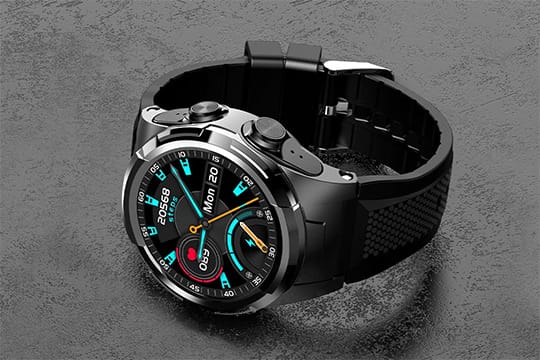Recent auctions have revealed that certain 19th-century clocks are commanding several thousand dollars, underscoring a profound shift in our appreciation for longevity and artisanal skill. The vintage timepiece perched on your shelf could potentially surpass the monetary worth of your smartwatch—not merely through resale value, but also by embodying a rich narrative and enduring craftsmanship.
As digital gadgets rapidly fall out of favor, collectors are increasingly drawn to mechanical clocks that continue to operate with serene accuracy after a century.
With rising auction values and a revitalization of traditional skills, the antique clock domain is vibrant. Here’s what you ought to consider before discarding or neglecting that cherished timepiece.

The Resurgence of Antique Clocks
Antiques are regaining traction across auction houses, online platforms, and estate sales, captivating collectors and buyers alike. In 2024, the global antiques sector reported a remarkable $58.4 billion in revenue, demonstrating that the desire for meticulously crafted historic objects is more than a fleeting trend.
Among the diverse range of antiques, timepieces from the 18th and 19th centuries are particularly celebrated for their intricate engineering and aesthetic allure. Clocks featuring mechanical movements, in particular, harmoniously blend artistry and utility, captivating collectors. Iconic designs such as French carriage clocks, American longcase models, and English bracket clocks are among the most coveted for their charm and masterful construction.
The Lasting Value of Old Clocks
While smartwatches offer immediate conveniences like fitness tracking and notifications, they typically depreciate in value, akin to automobiles. In stark contrast, antique clocks often appreciate, becoming increasingly valuable with time.
Assessing the worth of a clock can be complex, especially in a volatile market where preferences and trends fluctuate. For example, a mid-1990s Howard Miller grandfather clock was placed on Facebook Marketplace for $3,000, yet it remained unsold even at a reduced price of $1,500.
This outcome is not unexpected, as its actual value likely neared $500. Thus, expert insights become invaluable, as even lesser-known creations can garner impressive prices if they exhibit premium craftsmanship and original components.
The overarching antique market is flourishing with billions of dollars in revenue, yet the demand for clocks varies. The market for antique clocks is subject to fluctuations due to evolving design trends, consumer preferences, and perceived scarcity.
However, certain models, such as grandfather clocks, bracket clocks, and mantel designs, consistently hold their value and are often favored by collectors and interior designers alike.
Identifying a Valuable Clock
If you have a clock languishing on a mantel or tucked away in a storage box, take a moment to inspect it before dismissing its potential value. Seeking the expertise of a clock appraiser or antique specialist can provide a more nuanced understanding of its worth. Certain characteristics signal the potential value of antique clocks.
Materials to Consider
Begin by assessing the materials used in the clock’s construction. High-quality older clocks typically feature solid hardwoods such as oak, walnut, or mahogany, often complemented by brass gears or glass inlays.
Such materials not only enhance visual allure but also attest to the clock’s meticulous craftsmanship—qualities that mass-produced plastic or laminate models largely lack.
Mechanical Versus Battery-Powered
Turn the clock over and examine its interior. Authentic antiques predominantly exhibit mechanical mechanisms driven by weights or wound springs, reflecting both age and artisanal skill. These intricate workings necessitate knowledgeable maintenance and considerably enhance a clock’s value.
A battery compartment likely indicates a clock manufactured in the mid-20th century or later. While certain vintage battery-operated clocks attract enthusiasts, mechanical variants maintain the most enduring value.
Indicators of Original Craftsmanship
Scrutinize the clock’s face, casing, and even the screws for signs of its origin. Hand-painted numerals, intricately carved wood, dovetail joints, and the presence of original maker’s marks signify deliberate craftsmanship. These attributes distinguish older, handmade clocks from their mass-produced counterparts of the 20th century.
While some wear and patina can enhance a clock’s character, modern screws or replaced components may detract from its authenticity and value. When a clock possesses artistic elements and emanates a sense of historical significance, it invariably merits a closer examination.
Embracing the Timeless Value
The growing fascination with antique clocks is indicative of a broader shift in the items we choose to collect, preserve, and invest in. Although not every dusty timepiece hides hidden worth, many exemplify artisanship that contemporary gadgets cannot replicate.
With the antiques market thriving and buyers seeking enduring value, antiquated clocks are being rediscovered, making it an opportune moment to reassess what has been quietly ticking away on your shelf.
Jennifer Allen is a retired chef turned traveler, cookbook author, and nationally syndicated journalist; she’s also a co-founder of Food Drink Life, where she shares expert travel tips, cruise insights, and luxury destination guides. A recognized cruise expert with a keen passion for high-end experiences and unique locales, Jennifer traverses the globe with inquisitiveness, depth, and a storyteller’s perspective.
Her articles appear regularly in prominent publications, including the Associated Press Wire, The Washington Post, and the Seattle Times.
The post That old clock on your shelf might be worth more than your smartwatch appeared first on Food Drink Life.
Source link: Nbcrightnow.com.






